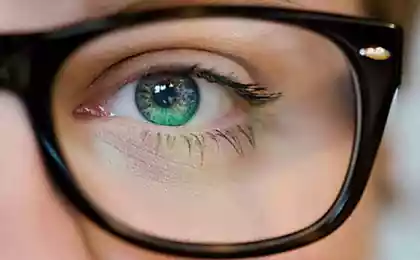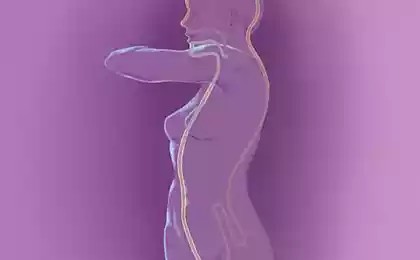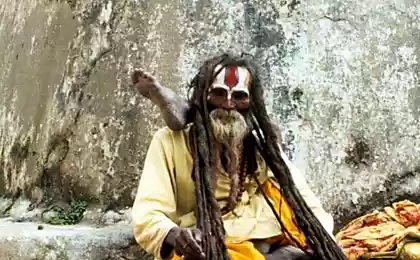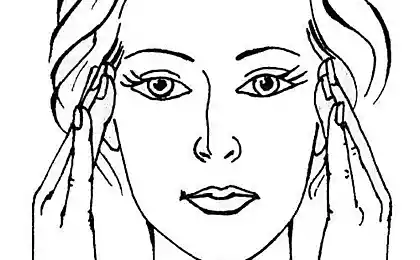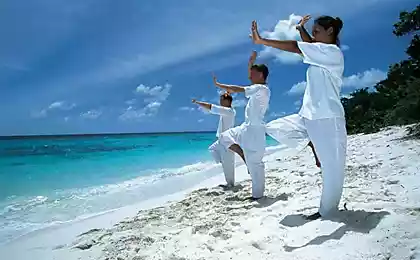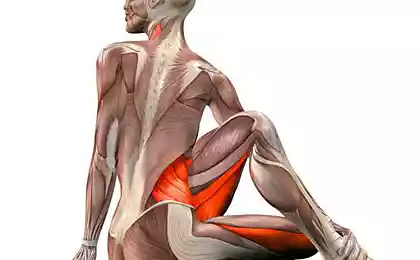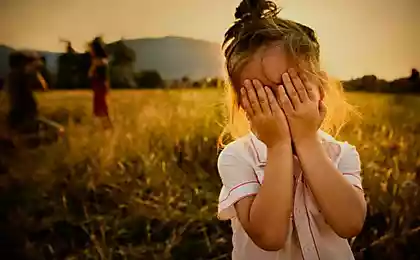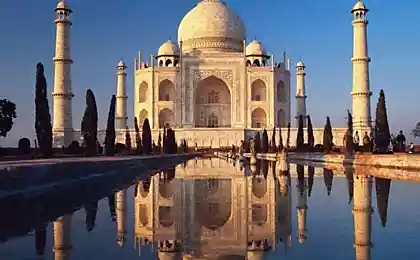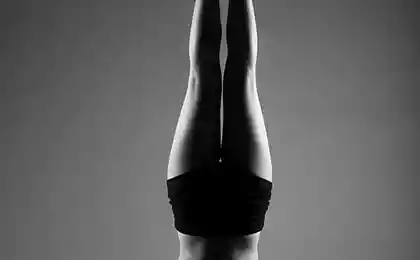172
6 Good Reasons to Look at Your Nose
Looking at the tip of the nose (nasagra drishti) is the most common point of concentration during yoga practice. Its definition is found in Hatha Yoga Pradipika: “The mind is balanced, the eyes are half-open, the eye is fixed on the tip of the nose.” Drishti is usually kept during asana fixation. The strict rule here is only one – you need to look at your nose, not someone else’s.
There are at least 6 answers to the question of why yogis stare at the tip of the nose. 1. Helps to focus and increase the power of attention “The eyes are concentrated and the mind is also concentrated. If your mind is in a state of confusion and chaos, or if you are angry, use this method.
“Drishti improves concentration and gives insight into the unity of practice. By focusing our gaze on one point during practice, we increase our concentrated presence in asana. Focus and awareness are then transferred to our daily lives, writes Sharath R. Joyce, the guardian of the Ashtanga-vinyasa yoga tradition, in his book Ashtanga Yoga Anushthana.
2. Provides correct head position Drishti serves as an element of asana adjustment, indicating what the position of the head should be. If, for example, when performing the Dog with a muzzle, you do not look upwards, but at the tip of the nose - the neck does not overstrain. As noted in the book “Ashtanga Yoga” by Petri Ryasianen, due to drishti “in postures on balance, it is possible to maintain stability with less tension”, and “with deflections, the head takes the right position, the chest opens.”
3. Improves tilt and deflection Nasagra Drishti is a way to activate the ascending gate reflex. This was the first time I heard from Sergey Agapkin. In asana, we can reach a certain level of stretching, and further pain signals cause us to stop. It's normal. Approximately 15% of our mobility is blocked – this is some kind of insurance, a safety zone, said Dr. Agapkin. Due to the tension of the oculomotor muscles, this blockage can be removed and, accordingly, bend deeper or bend: the activity of motor neurons located above interrupts the information that goes from below.
“It’s a distraction in its purest form,” adds Agapkin. But you need to put your eyes in a pile so that you really have tension. If there is no tension, there will be no use.”
4. Energizes the body “Prana follows the energy of attention,” writes David Frawley in Yoga from A to Z. That’s why it’s so important to focus on what’s going on inside of us. “Since prana is connected with consciousness and rushes after thought, to focus pranic currents, it is necessary to plunge deeply into oneself,” confirms Petri Räisianen. That is, by taking attention inward, we fill the body with energy. By the way, from Sanskrit “drishti” is translated as “look, look”, and as “intention”.
5. Activates a bandhu mule Fixing the gaze on the tip of the nose “when performed with awareness for a long time helps to awaken the muladhara chakra and induce meditative states,” notes Swami Niranjanananda Saraswati in Prana. Pranayama. Pranavidya.
The inextricable connection between the look and the mule of the bandha was also spoken by such authoritative yoga practitioners as Richard Freeman and Eddie Stern. “All the senses are connected to the different chakras through the primary element (tattva) they represent.” Thus, the muladhara chakra, symbolizing the earth, is associated with the sense of smell and, accordingly, the nose. Therefore, directing the look at the tip of the nose, we automatically use the mule bandhu, which is associated with muladhara, through the nadi system, Eddie Stern explained at a seminar in Moscow.
6. It allows you to feel the connection of the body and mind The tip of the nose is where the body and mind meet. There are only two points where nerve cells extend outside the brain without going to the spinal cord: the eyes and the tip of the nose.
P.S. And remember, just changing our consumption – together we change the world!
Join us on Facebook and VKontakte, and we are also in Odnoklasniki
Source: dayoga.ru/blog/6-prichin-smotret-na-konchik-nosa/
There are at least 6 answers to the question of why yogis stare at the tip of the nose. 1. Helps to focus and increase the power of attention “The eyes are concentrated and the mind is also concentrated. If your mind is in a state of confusion and chaos, or if you are angry, use this method.
“Drishti improves concentration and gives insight into the unity of practice. By focusing our gaze on one point during practice, we increase our concentrated presence in asana. Focus and awareness are then transferred to our daily lives, writes Sharath R. Joyce, the guardian of the Ashtanga-vinyasa yoga tradition, in his book Ashtanga Yoga Anushthana.
2. Provides correct head position Drishti serves as an element of asana adjustment, indicating what the position of the head should be. If, for example, when performing the Dog with a muzzle, you do not look upwards, but at the tip of the nose - the neck does not overstrain. As noted in the book “Ashtanga Yoga” by Petri Ryasianen, due to drishti “in postures on balance, it is possible to maintain stability with less tension”, and “with deflections, the head takes the right position, the chest opens.”
3. Improves tilt and deflection Nasagra Drishti is a way to activate the ascending gate reflex. This was the first time I heard from Sergey Agapkin. In asana, we can reach a certain level of stretching, and further pain signals cause us to stop. It's normal. Approximately 15% of our mobility is blocked – this is some kind of insurance, a safety zone, said Dr. Agapkin. Due to the tension of the oculomotor muscles, this blockage can be removed and, accordingly, bend deeper or bend: the activity of motor neurons located above interrupts the information that goes from below.
“It’s a distraction in its purest form,” adds Agapkin. But you need to put your eyes in a pile so that you really have tension. If there is no tension, there will be no use.”
4. Energizes the body “Prana follows the energy of attention,” writes David Frawley in Yoga from A to Z. That’s why it’s so important to focus on what’s going on inside of us. “Since prana is connected with consciousness and rushes after thought, to focus pranic currents, it is necessary to plunge deeply into oneself,” confirms Petri Räisianen. That is, by taking attention inward, we fill the body with energy. By the way, from Sanskrit “drishti” is translated as “look, look”, and as “intention”.
5. Activates a bandhu mule Fixing the gaze on the tip of the nose “when performed with awareness for a long time helps to awaken the muladhara chakra and induce meditative states,” notes Swami Niranjanananda Saraswati in Prana. Pranayama. Pranavidya.
The inextricable connection between the look and the mule of the bandha was also spoken by such authoritative yoga practitioners as Richard Freeman and Eddie Stern. “All the senses are connected to the different chakras through the primary element (tattva) they represent.” Thus, the muladhara chakra, symbolizing the earth, is associated with the sense of smell and, accordingly, the nose. Therefore, directing the look at the tip of the nose, we automatically use the mule bandhu, which is associated with muladhara, through the nadi system, Eddie Stern explained at a seminar in Moscow.
6. It allows you to feel the connection of the body and mind The tip of the nose is where the body and mind meet. There are only two points where nerve cells extend outside the brain without going to the spinal cord: the eyes and the tip of the nose.
P.S. And remember, just changing our consumption – together we change the world!
Join us on Facebook and VKontakte, and we are also in Odnoklasniki
Source: dayoga.ru/blog/6-prichin-smotret-na-konchik-nosa/
A simple and cheap recipe of our grandmothers from hair loss
Chess soul. How to change EVERYTHING in your life?


